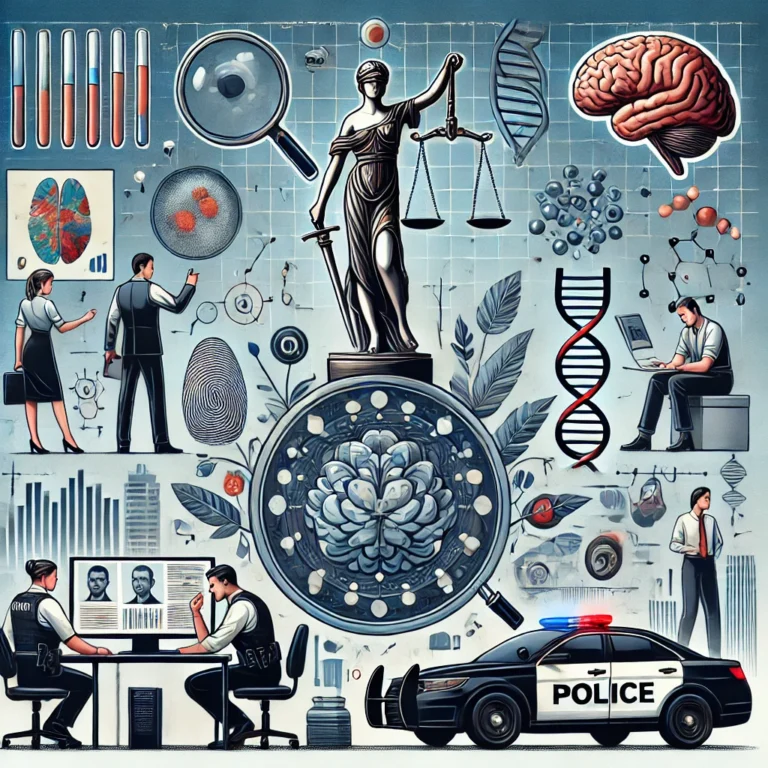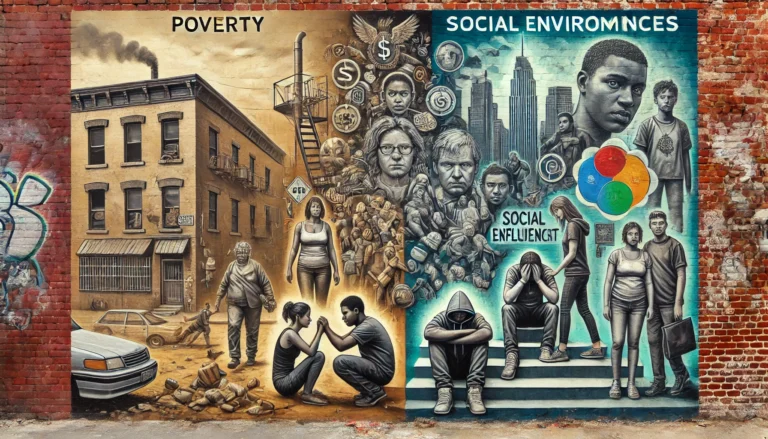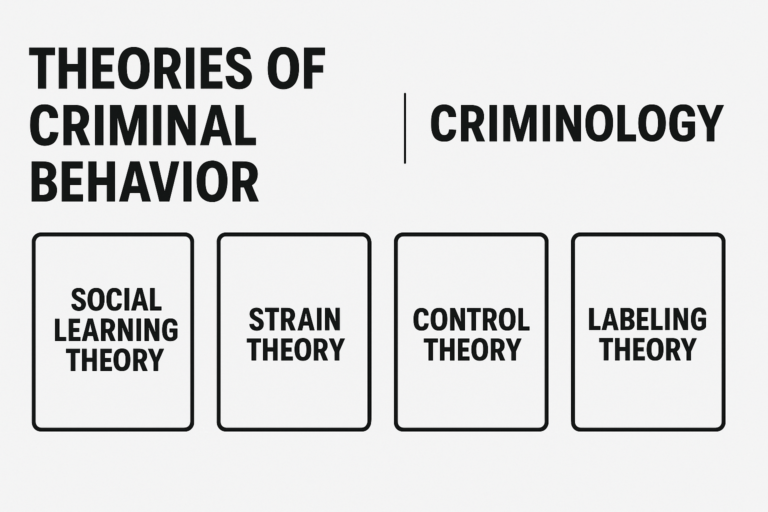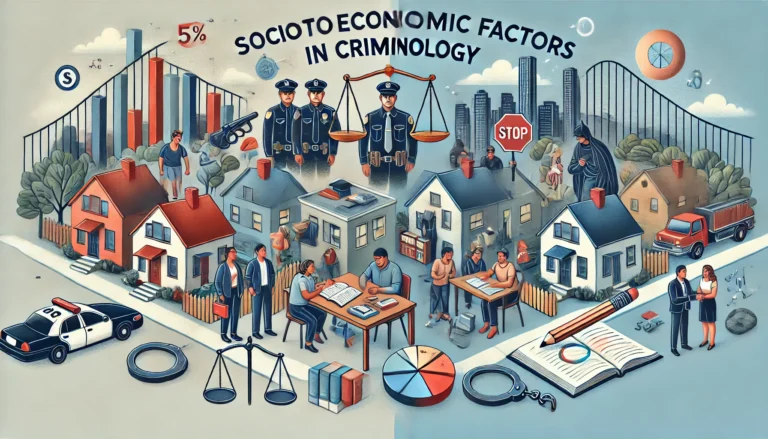The Geographical Factor in Criminology: Understanding Crime Through Spatial Perspectives
Introduction
Criminology, as a multidisciplinary field, seeks to understand the causes, patterns, and prevention of crime. Among the many factors influencing criminal behavior, geography plays a critical role in shaping where, how, and why crimes occur. The geographical factor in criminology explores the spatial distribution of crime, highlighting the interplay between location, environment, and human behavior. This perspective not only aids in understanding criminal activities but also provides insights for effective crime prevention strategies.
Historical Context
The relationship between geography and crime has deep historical roots. The Chicago School of Sociology, established in the early 20th century, was among the first to systematically examine how urban environments influence criminal behavior. Scholars like Robert Park and Ernest Burgess introduced ecological studies that analyzed crime patterns within urban landscapes. Their work demonstrated that certain areas, particularly those marked by poverty and social disorganization, exhibited higher crime rates. These findings laid the foundation for the study of spatial dimensions in criminology.
Key Geographical Factors in Crime
Urbanization and Crime Rates
Urban areas often experience higher crime rates due to factors like population density, anonymity, and economic disparities. Rapid urbanization can exacerbate these issues, creating environments where criminal activities thrive. For example, poorly planned urban expansions may lead to the development of informal settlements with limited law enforcement presence.
Socioeconomic Disparities Across Regions
Geographical disparities in wealth and resources contribute significantly to crime rates. Neighborhoods with high unemployment, inadequate housing, and limited access to education often become hotspots for criminal activity. These areas, commonly referred to as “crime-prone zones,” underscore the socio-spatial inequalities that influence crime.
Influence of Population Density
Higher population density often correlates with increased crime rates, as crowded environments provide more opportunities for both violent and property crimes. However, the relationship is complex, as densely populated areas may also benefit from greater law enforcement and community vigilance.
Spatial Distribution of Criminal Hotspots
The concept of “hotspots” in criminology highlights specific areas where crime is disproportionately concentrated. These hotspots often emerge in locations with a convergence of suitable targets, motivated offenders, and a lack of capable guardians, aligning with the Routine Activity Theory.
The Role of Environmental Criminology
Environmental criminology focuses on how physical environments and spatial dynamics influence criminal behavior. Several theories underscore this relationship:
- Routine Activity Theory: This theory posits that crime occurs when a motivated offender, a suitable target, and the absence of capable guardians converge in space and time. Geographical analysis helps identify such convergence points.
- Crime Pattern Theory: This framework examines how offenders’ movements and daily routines shape the spatial distribution of crime. It highlights the importance of understanding offenders’ decision-making processes and their interactions with specific environments.
- Broken Windows Theory: This theory suggests that visible signs of disorder, such as broken windows or graffiti, can lead to increased criminal activity. Geographical analysis helps identify areas where such signs are prevalent, guiding intervention efforts.
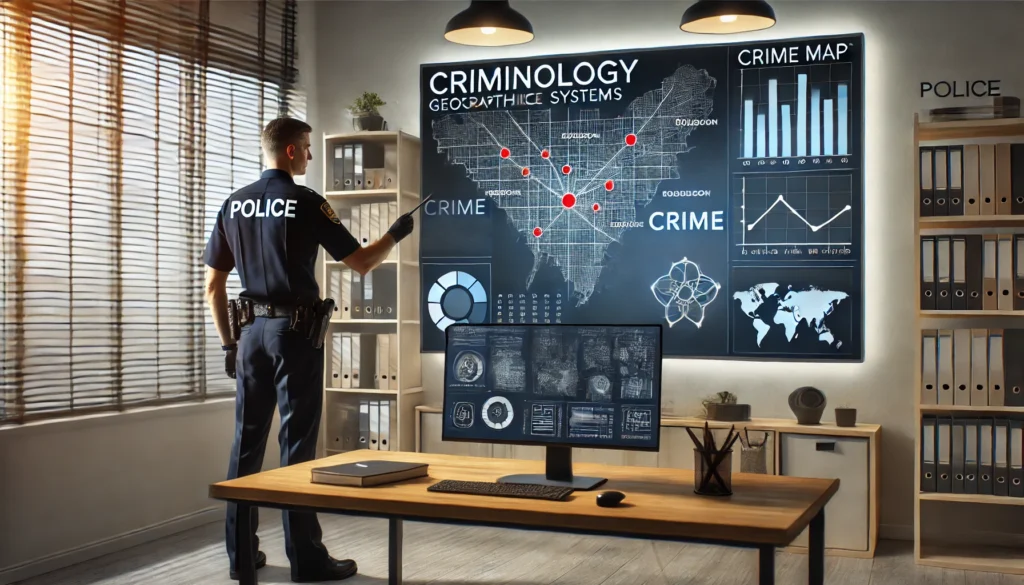
Modern Tools in Geographical Criminology
Technological advancements have revolutionized the study of geography in criminology. Tools like Geographic Information Systems (GIS) allow for detailed mapping and analysis of crime patterns. These technologies enable law enforcement agencies to:
- Visualize Crime Trends: GIS creates heatmaps that highlight high-crime areas, helping authorities allocate resources effectively.
- Predict Crime: Predictive policing uses historical crime data and spatial analysis to forecast where crimes are likely to occur.
- Evaluate Interventions: Geographical data helps assess the impact of crime prevention measures, such as increased patrols or community programs.
Case Studies
Cities like New York and Los Angeles have successfully used GIS to reduce crime rates. For instance, the NYPD’s CompStat system relies on geographical analysis to identify crime trends and deploy resources strategically. Similarly, Los Angeles’ predictive policing programs have shown promising results in preventing property crimes.
Applications in Criminal Justice Policies
Understanding the geographical factor in criminology has profound implications for criminal justice policies. Urban planning can play a vital role in crime prevention by designing spaces that discourage criminal behavior. For example:
- Improved Lighting: Well-lit streets and public spaces reduce opportunities for crime.
- Community Design: Mixed-use developments promote community interaction and vigilance.
- Targeted Interventions: Policies based on geographical analysis can address specific issues in high-crime areas, such as youth unemployment or substance abuse.
Challenges in Using Geographical Factors
While geographical analysis offers valuable insights, it also poses challenges. Ethical concerns arise with predictive policing, as it may lead to over-policing in certain areas, disproportionately affecting marginalized communities. Additionally, geographical approaches must address the root causes of crime, such as poverty and inequality, rather than merely focusing on spatial symptoms.
Conclusion
The geographical factor in criminology provides a crucial lens for understanding crime. By examining the spatial dimensions of criminal behavior, researchers and policymakers can develop targeted strategies to prevent and address crime effectively. As technology continues to advance, integrating spatial analysis into criminology will offer even greater opportunities to create safer and more equitable communities.
What other geographical factors do you think influence crime? Share your thoughts or research findings below!


